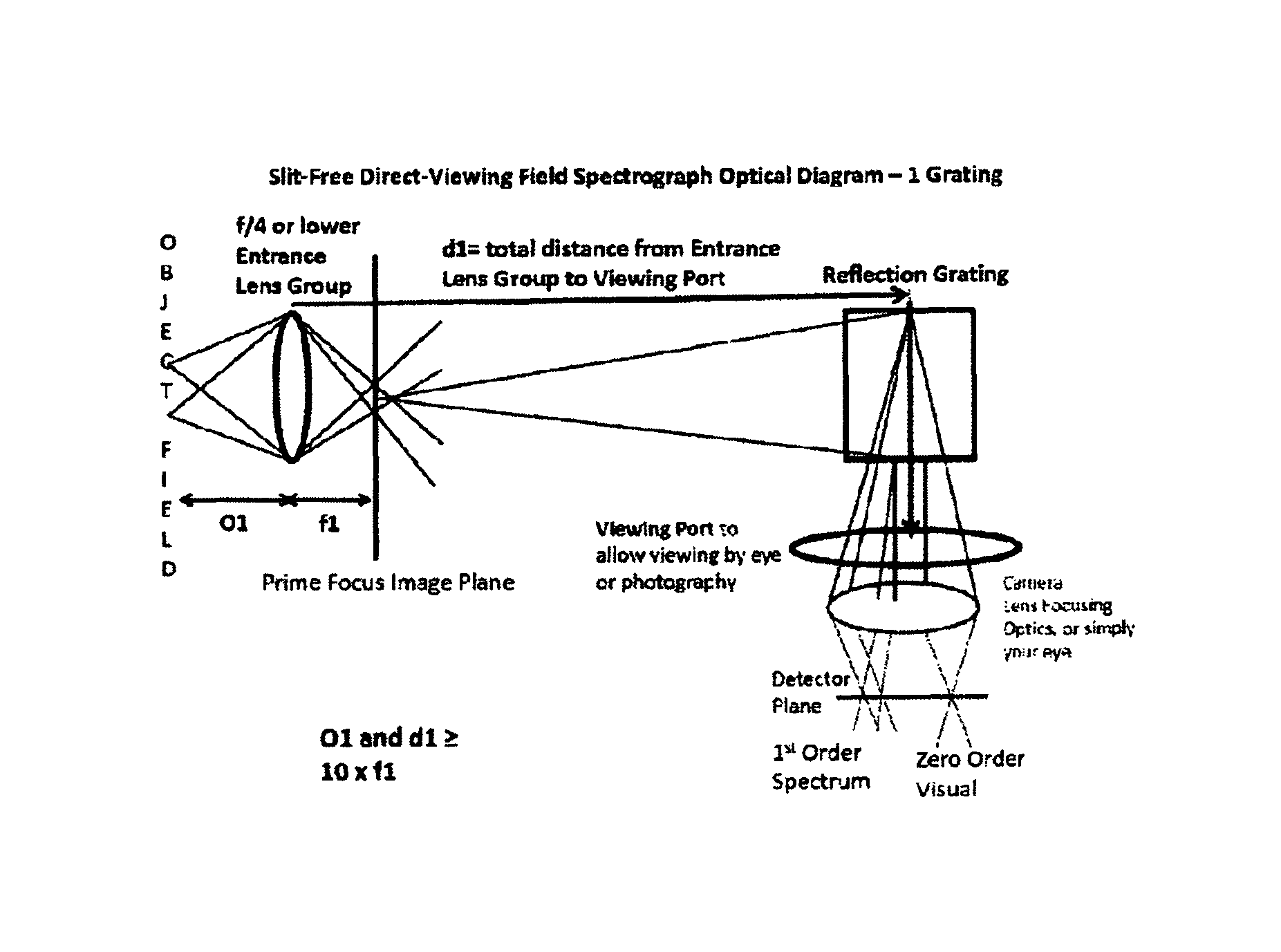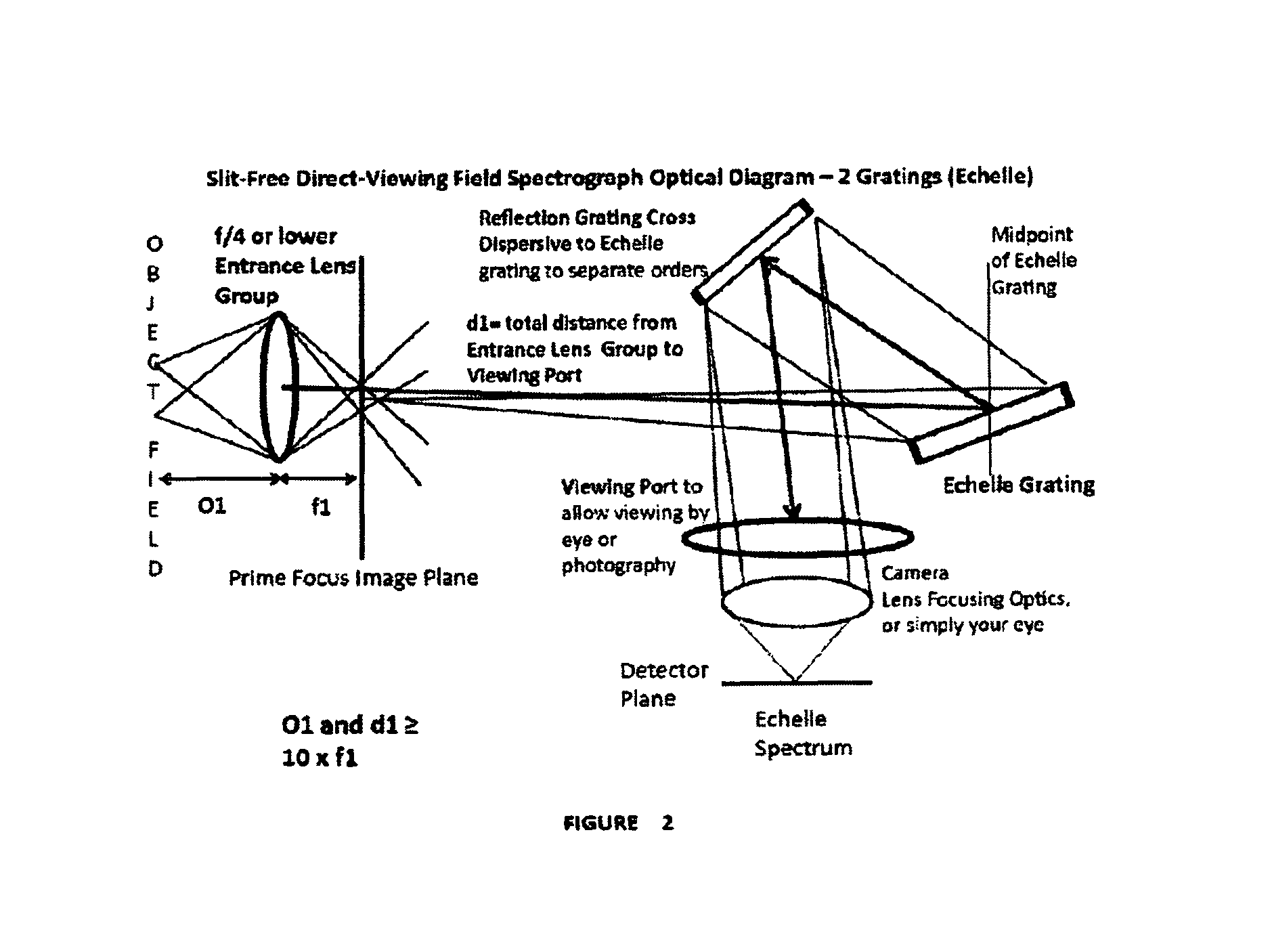High resolution slit-free direct-viewing multiplexing field spectrograph
a spectrograph and multiplexing technology, applied in the field of high resolution slit-free directviewing multiplexing field spectrographs, can solve the problems of not being able to achieve high spectral resolution, not being able to simultaneously monitor the spectra of multiple objects, and the design of wang, et al., to achieve the effect of large increase in light throughput and high resolution
- Summary
- Abstract
- Description
- Claims
- Application Information
AI Technical Summary
Benefits of technology
Problems solved by technology
Method used
Image
Examples
Embodiment Construction
[0009]In designing a high resolution spectrograph for field use, it has been surprisingly found that the usual entrance aperture can be eliminated by careful selection of the entrance lens specification and remaining spectrograph configuration. In particular, the focal length of the entrance lens must be 1 / 10 or less the length of the distance to the observation or image plane, and at least 1 / 10 times the distance to the closest object under study, preferably 1 / 100 or less for the latter. This leads to a specification of a very low f / # lens, less than f / 4, to replace the entrance aperture, similar to King, but positive rather than negative to enhance light throughput, and of standard spherical design rather than cylindrical or aspheric as required by King and Wang, respectively. Typically, short focal length, low f / # lenses are avoided in the prior art due to spatial and chromatic aberrations, and hence, loss of resolution. For example, Wang, et al. describe the need for an aspheric...
PUM
 Login to View More
Login to View More Abstract
Description
Claims
Application Information
 Login to View More
Login to View More - R&D
- Intellectual Property
- Life Sciences
- Materials
- Tech Scout
- Unparalleled Data Quality
- Higher Quality Content
- 60% Fewer Hallucinations
Browse by: Latest US Patents, China's latest patents, Technical Efficacy Thesaurus, Application Domain, Technology Topic, Popular Technical Reports.
© 2025 PatSnap. All rights reserved.Legal|Privacy policy|Modern Slavery Act Transparency Statement|Sitemap|About US| Contact US: help@patsnap.com



